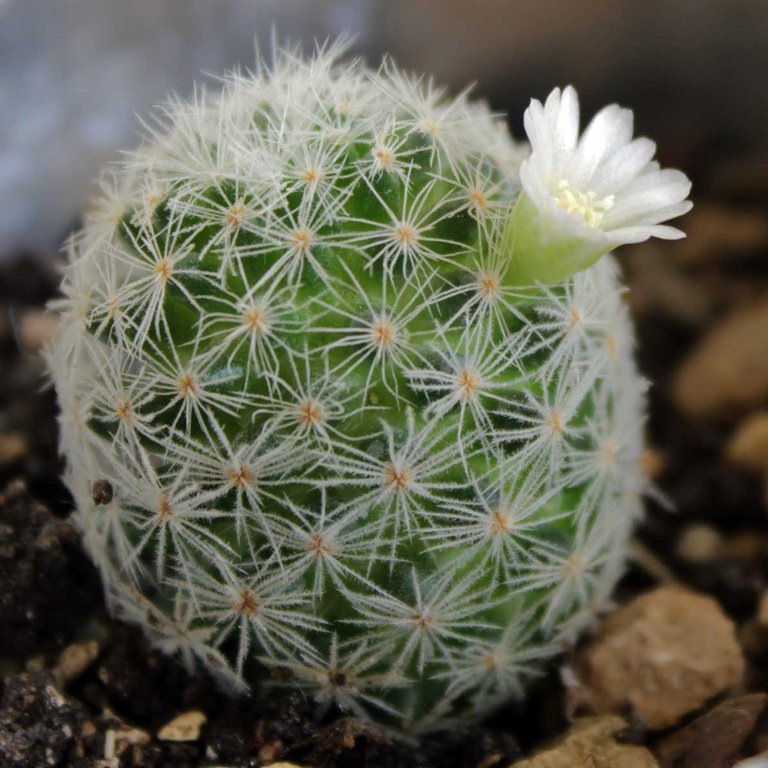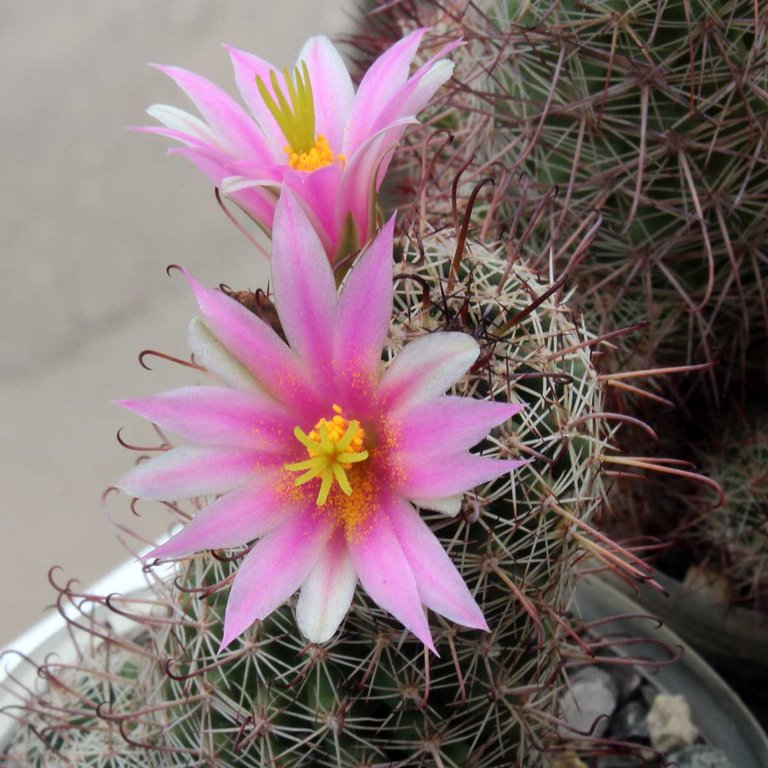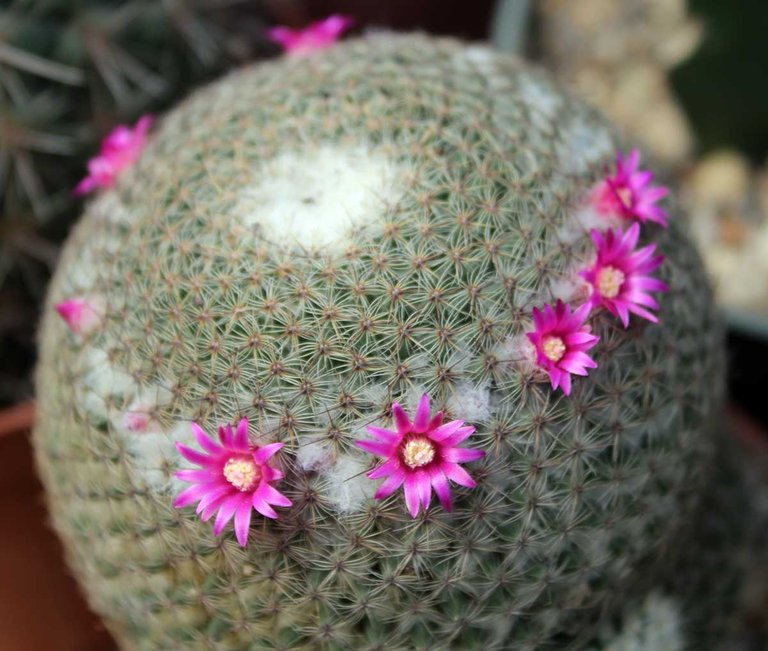Hello Hivers passionate about the world of succulent plants. Today I bring you a new summary of cultivation of one of the most popular genera in cacti, the Mammillaria genus. This genus has more than 300 known species and hundreds of hybrids cultivated, mostly as collection plants. Recently, different genetic studies have allowed a more specific delimitation of the genus with the return to ancient genera that were considered synonyms.
Cacti of the Mammillaria genus are always succulent, globose to columnar and with abundant blooms forming apical floral crowns. In addition, they have conical tubercles on their stem known as nipples where the areoles are separated into two sections. The region that generates thorns and shoots and the section that generates flowers, villi and fruits. The flowers are generally small and colorful with a few exceptions showing flowers larger than 3 cm in diameter. The most common flower color is purple, but species with white, red, yellow and mixed flowers are known.
Some plants of the genus Mammillaria in the collection:



To grow this group of plants we need the following basic requirements:
- They require being located in the sun during the coolest seasons of the year. During the summer season it is recommended to provide them with light shade.
- Water every 10 days to avoid rot. Avoid getting the stems too wet.
- The Substrate must be 70-80% mineral to promote rapid drainage of irrigation water.
- They need to develop in climates with temperatures between 22⁰C-30⁰C for much of the year.
- Attacked by mealybugs, mites and various pathogenic fungi.
- Multiplication by seeds or by separating offspring in prolific species.
If you like this content, do not hesitate to support me with your vote and follow me. See you soon.